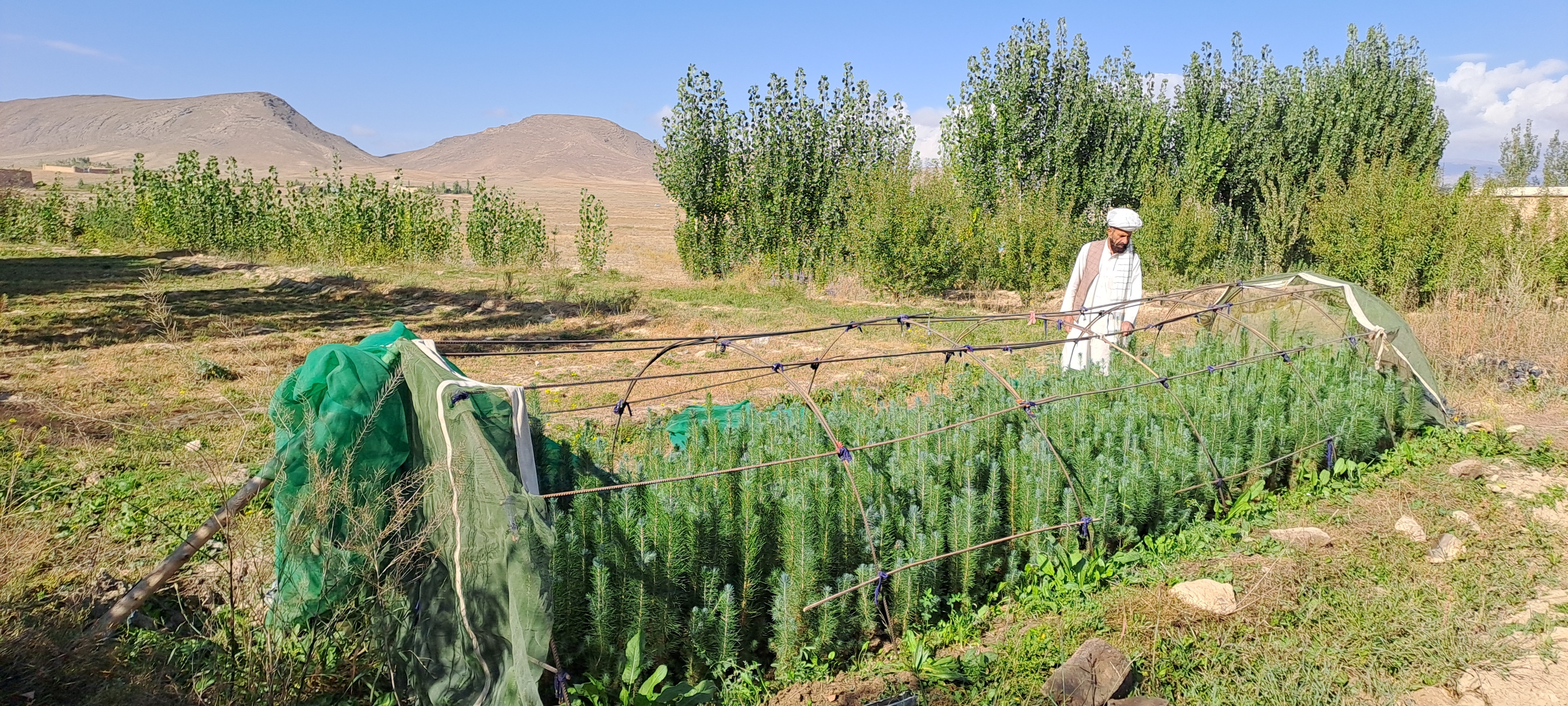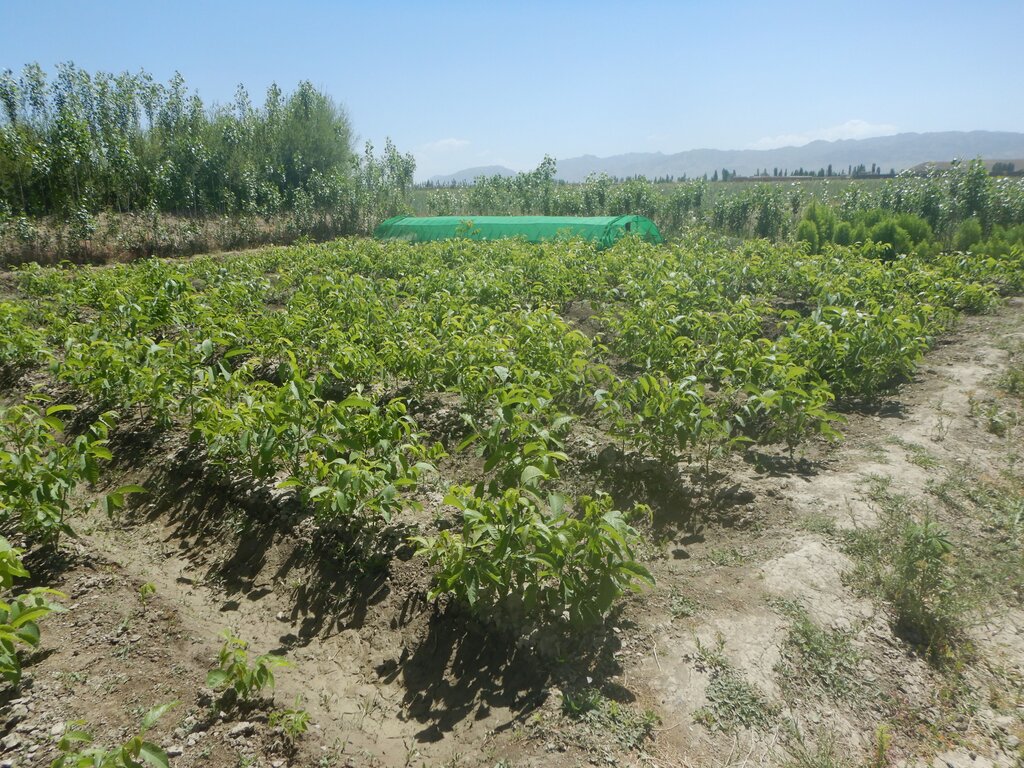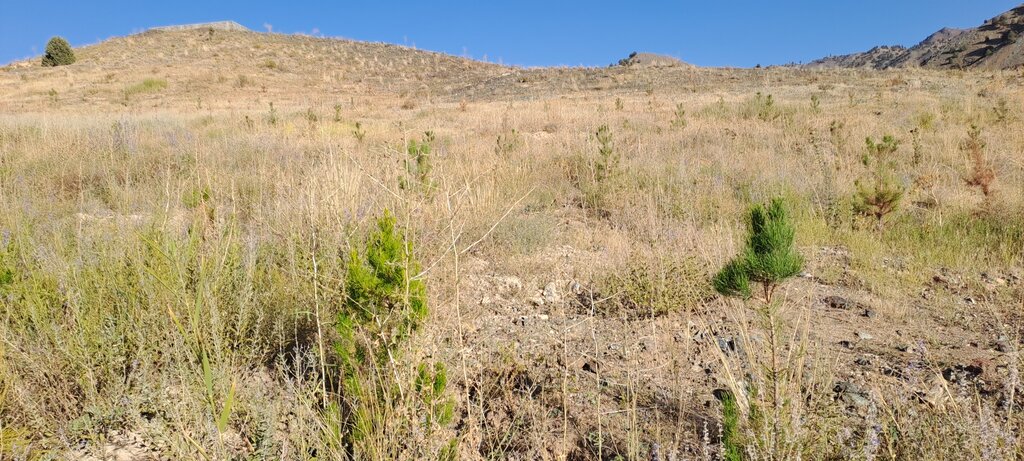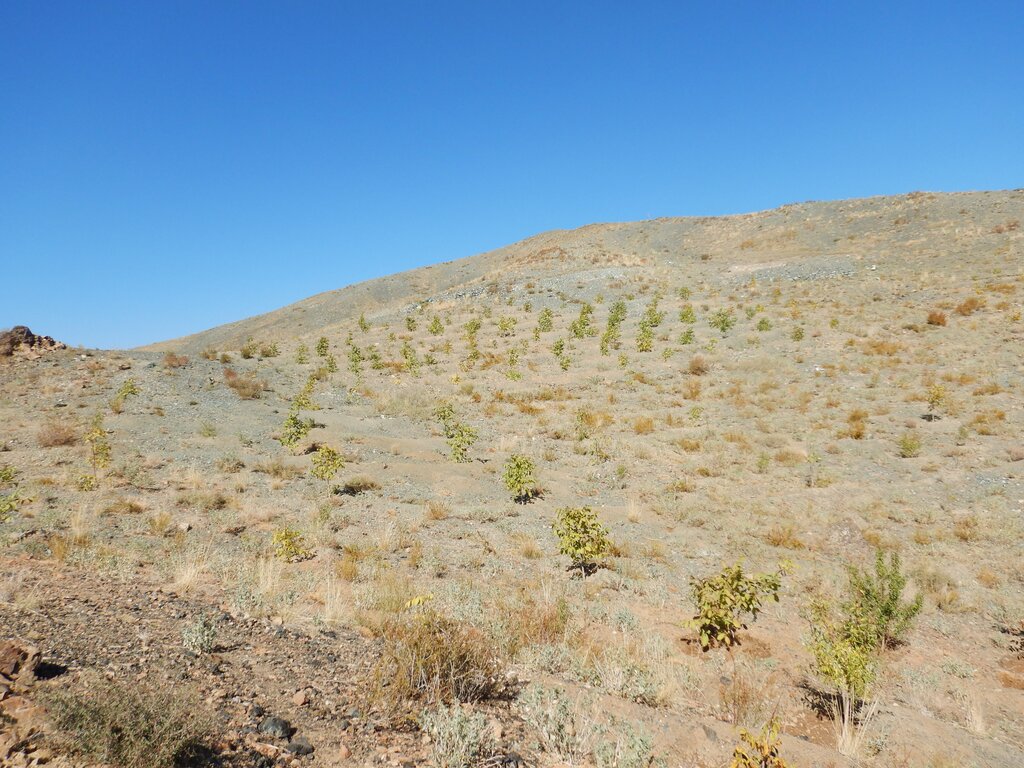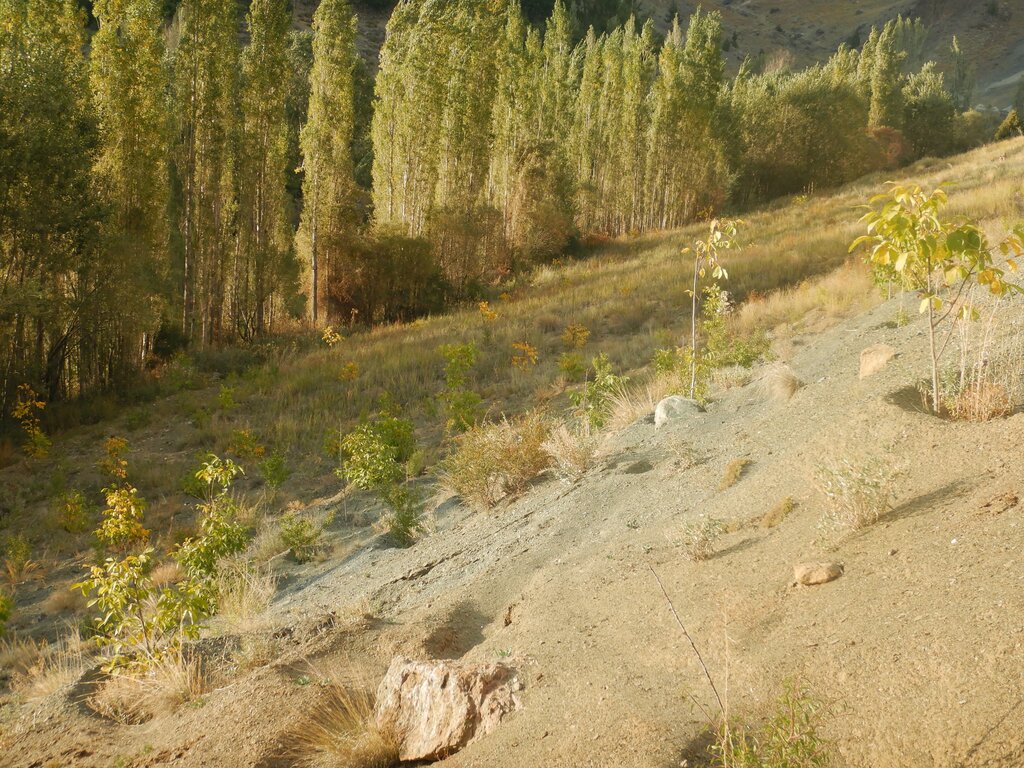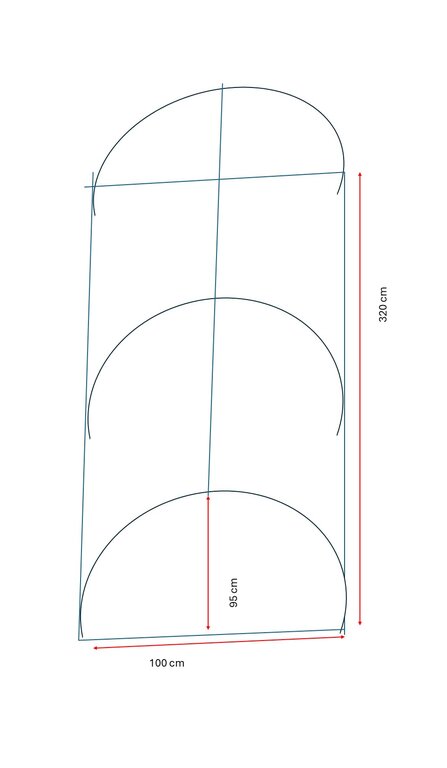Restoration in the High Conservation Value Forests (HCVF) through community-led initiatives in Paktya [أفغانستان]
- تاريخ الإنشاء:
- تحديث:
- جامع المعلومات: Mohammad Wazir Ahmadzai
- المحررون: Mir Wali Khan Lakanwal, Mohammad Mustafa Sahebzada, Megha Bajaj, Megha bajaj
- المراجعون: Rima Mekdaschi Studer, Illias Animon, Muhammad Ishaq Safi
Chilghuza and Nakhter
technologies_7454 - أفغانستان
- Restoration in the High Conservation Value Forests (HCVF) through community-led initiatives in Paktya: 5 مارس، 2025 (inactive)
- Restoration in the High Conservation Value Forests (HCVF) through community-led initiatives in Paktya: 24 مارس، 2025 (inactive)
- Restoration in the High Conservation Value Forests (HCVF) through community-led initiatives in Paktya: 7 مايو، 2025 (public)
عرض الأقسام
توسيع الكل طي الكل1. معلومات عامة
1.2 تفاصيل الاتصال بالأشخاص الرئيسيين لمصدر المعلومات والمؤسسات المشاركة في تقييم وتوثيق التقنية
الشخص (الأشخاص) الرئيسي لمصدر المعلومات
مستخدم الأرض:
Sayed Hakim Shah
Forest management Association
أفغانستان
مستخدم الأرض:
Sabawon Samiullah
Forest mangemnet Association
أفغانستان
اسم المشروع الذي سهّل توثيق/تقييم التقنية (إذا كان ذلك على صلة)
Community-based sustainable land and forest management in Afghanistanاسم المؤسسة (المؤسسات) التي سهلت توثيق/تقييم التقنية (إذا كان ذلك على صلة)
FAO Afghanistan (FAO Afghanistan) - أفغانستان1.3 الشروط المتعلقة باستخدام البيانات الموثقة من خلال WOCAT
يوافق جامع المعلومات والشخص (لاشخاص) الرئيسي لمصدر المعلومات على الشروط المتعلقة باستخدام البيانات الموثقة من خلال WOCAT:
نعم
1.4 إعلان بشأن استدامة التقنية الموصوفة
هل التقنية الموصوفة هنا تمثل مشكلة فيما يتعلق بتدهور الأراضي، بحيث لا يمكن إعلانها تقنية مستدامة لإدارة الأراضي؟:
كلا
2. وصف تقنيةالإدارة المستدامي للأراضي
2.1 وصف مختصر للتقنية
تعريف التقنية:
An integrated community-led initiative has been established to restore the degraded forests in Paktya province. This initiative focuses on setting up nurseries and incorporates both indigenous and scientific knowledge to cultivate climate-resilient species, such as Cedrus deodara and Pinus gerardiana. These efforts have enhanced the community’s knowledge and skills in sapling production and transplantation, leading to significant improvements in the productivity of these key species, which holds substantial ecological, social, cultural and economic values.
2.2 وصف تفصيلي للتقنية
الوصف:
The technology is applied in the communities of Ahmad Aba and Sayed Karam districts in the Paktya province, focusing on restoration of high conservation value forests. It is implemented through direct support of 13 Forest Management Associations (FMAs).
Key members of FMA participated in capacity building focused on community -based natural resources management (CBNRM), establishment of community-based nurseries and restoration of degraded forest .The aim of the capacity building initiative was to enhance the ability of the associations to restore the degraded area and implement sustainable practices, particularly through establishment of community-based nurseries, production of saplings and subsequent planting of these saplings in targeted restoration sites .
Over the past three years, 67 nurseries have been established, focusing on climate- resilient species such as Cedrus deodara, Pinus jerardiana, and Juglans regia, among others species by integrating both indigenous and scientific knowledge. Indigenous knowledge includes practices such as pre-irrigation, the use of animal-powered initial plowing with hand-held hoes, weed removal, and other traditional techniques. Scientific recommendations include improvement of sapling production, adaption of soil inoculation with Mycorrhiza, species-specific sowing methods, controlled temperature management in greenhouses, effective watering/irrigation techniques (manually and using sprinklers).
The project has significantly enhanced sapling production and transplantation for reforestation purposes. The community-based nurseries were established using carefully selected seeds, chosen based on seed quality, sowing timing, and the process of breaking seed dormancy. Saplings were then raised in the nurseries for the first 2 to 3 years until, they are ready for transplantation. These saplings are then transplanted to the degraded forest areas. The land preparation and digging of pits were carried out in the restoration sites before transplanting saplings. After transplanting, FMAs took care of the saplings. Additionally, mechanical pests and diseases control measures were employed to produce good-quality saplings in community-based nurseries. These interventions raised community awareness on forest condition and management and thereby enhanced their capacities to improve the forest cover.
Major activities include site assessment and pre-planning, selection of high conservation value tree species, site selection, technical training on site management (preparation of soil, sowing method, irrigation management, greenhouse) and capacity building of the communities and beneficiaries on nursery soil mixture preparation, breaking of dormancy using different techniques, sapling production and transplantation.
The 13 Forest Management Associations (FMAs) are the legal institutions for the management of natural resources; they hold a license for reforestation activities in degraded forests. They are officially registered with Ministry of Agriculture, Irrigation and Livestock (MAIL). FMAs are responsible for implementing the restoration measures. These communities showed commitments for the transplantation, irrigation and regular patrolling of the saplings.
The goal of the restoration efforts is to enhance the capacity of the local community on methods of in-situ and ex-situ biodiversity conservation and creation of a recreational site. It also aimed to raise the awareness towards mitigation of climate change, and ultimately improve the livelihoods of rural populations. The application of technologies offers cost-effective and eco-friendly restoration of the high conservation value forest especially of pine (Pinus jerardiana) and deodar (Cedrus deodara). Additionally, it provided work opportunities and income generation for 100 families. The technology is well-suitable for replication and adaptation in the local context. As a result, the local community consistently produces the necessary saplings for reforestation and supplies them to the project at a reasonable cost every year.
2.3 صور التقنية
2.4 فيديوهات عن التقنية
التاريخ:
09/12/2024
الموقع:
Afghanistan
اسم مصور الفيديو:
Mohammad Wazir Ahmadzai
2.5 البلد/المنطقة/المواقع التي تم تنفيذ التقنية فيها والتي يغطيها هذا التقييم
البلد:
أفغانستان
المنطقة/الولاية/المحافظة:
Paktya
مزيد من التفاصيل حول الموقع:
Ahmad Aba and Sayed Karam
حدد انتشار التقنية:
- يتم تطبيقها في نقاط محددة/ تتركز على مساحة صغيرة
هل يقع موقع/مواقع التقنية في منطقة محمية بشكل دائم؟:
كلا
التعليقات:
In each forest management association, five community-based nurseries have been established, each covering less than 0.004 hectares. Once the saplings are ready for transplantation, typically after 2 to 3 years, they are transported from the nurseries to the restoration sites for planting. A total of 2,718 hectares of forest area have been restored in both Ahmad Aba and Sayed Karam districts. Community-based nurseries have been established in various villages and are being scaled up through the nursery owners to produce the saplings required for reforestation. The map highlights only these two districts.
Map
×2.6 تاريخ التنفيذ
اذكر سنة التنفيذ:
2021
2.7 إدخال التقنية
حدد كيف تم إدخال التقنية:
- من خلال المشاريع/ التدخلات الخارجية
3. تصنيف تقنية الإدارة المستدامي للأراضي
3.1 الغرض الرئيسي ( الأغراض الرئيسية) للتقنية
- الحد من تدهور الأراضي ومنعه وعكسه
- الحفاظ على النظام البيئي
- الحفاظ على/تحسين التنوع البيولوجي
- التكيف مع تغير المناخ/الظواهر المتطرفة وآثارها
- خلق أثر اقتصادي مفيد
3.2 نوع (أنواع) استخدام الأراضي الحالية حيث يتم تطبيق التقنية
استخدامات الأراضي مختلطة ضمن نفس وحدة الأرض:
كلا

الغابات/ الأراضي الحرجية
- زراعة الأشجار، التشجير
زراعة الأشجار والتشجير: تحديد أصل وتكوين الأنواع:
- أصناف مختلطة
نوع مزارع الأشجار، التشجير:
- مزارع الغابات شبه الاستوائية الجافة-أنواع الصنوبريات
نوع الشجرة:
- أنواع الصنوبر (الصنوبر)
هل الأشجار المذكورة أعلاه ملحاء أم دائمة الخضرة؟:
- مختلطة ملحاء / دائمة الخضرة
منتجات وخدمات:
- الخشب
- حطب الوقود
- الفواكه والمكسرات
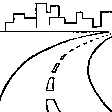
المستوطنات والبنية التحتية
- plastic tunnels in nurseries
ملاحظات:
The community-based nurseries are established in the village near to the forest areas.
3.3 هل تغير استخدام الأراضي نتيجة لتنفيذ التقنية؟
هل تغير استخدام الأراضي نتيجة لتنفيذ التقنية؟:
- لا (تابع مع السؤال 3.4)
3.4 إمدادات المياه
إمدادات المياه للأرض التي يتم تنفيذ التقنية عليها:
- مختلط بعلي-مروي
التعليقات:
Nurseries are irrigated. After transporting saplings, supplementary irrigation is required till five years. After the establishment of saplings, rainfed irrigation is enough.
3.5 مجموعةالإدارة المستدامة للأراضي التي تنتمي إليها هذه التقنية
- إدارة مزارع الغابات
- تحسين الغطاء الأرضي/النباتي
- حصاد المياه
3.6 التدابير التقنية في مجال إلادارة المستدامة للأراضي

التدابير النباتية
- V1: غطاء من الأشجار والشجيرات

التدابير البنيوية
- S1: المصاطب المتدرجة
- S4: تسوية الخنادق والحفر
3.7 الأنواع الرئيسية من تدهور الأراضي التي تناولتها التقنية

تآكل التربة بالمياه
- الوزن(Wt): فقدان التربة السطحية/تآكل السطح

تآكل التربة الناتج عن الرياح
- (Et): فقدان التربة السطحية
3.8 منع أو حد أو عكس تدهور الأراضي
تحديد هدف التقنية فيما يتعلق بتدهور الأراضي:
- الحد من تدهور الأراضي
- اصلاح/إعادة تأهيل الأراضي المتدهورة بشدة
4. المواصفات الفنية، وأنشطة التنفيذ، والمدخلات، والتكاليف
4.1 الرسم الفني للتقنية
المواصفات الفنية (المتعلقة بالرسم الفني):
All the saplings are grown under plastic tunnels, except for walnut, which is cultivated on raised beds (see photo). The technical drawing shows a prototype of the plastic tunnels used in the nursery. The plastic tunnel are constructed with dimensions of 95 cm in height, 100 cm in width, and 320 cm in length. During the winter, the saplings in the polybags under the tunnel are covered with transparent plastic to protect the saplings from the cold and in the summer, the plastic is removed and replaced with green netting to protect the saplings from overheating inside the tunnel and providing shade. The tunnels are oriented in a north-south direction to optimize exposure to daily sunlight. The selected area for plastic tunnel establishment was flat and at lower altitude minimizing the severe impacts of wind, sunlight, rain fall, snow fall and climate change.
Ventilation holes were installed on both ends of the tunnels to ensure optimal air circulation, promoting healthy plant growth and development. Each tunnel’s construction utilized 15 kilograms (kg) of 12 mm steel bars. Additionally, a green net with a width of 4 meters, along with 15 square meters of plastic (10 % transparent and 1 mm thick) was required to cover the tunnels. After 2 to 3 years, then the saplings are transplanted to restoration sites. Based on our practice, Pinus saplings are cultivated with a spacing of 5 meters between rows and 5 meters between plants. This arrangement ensures that 400 saplings will cover 1 hectare of land. For walnut saplings, we plant 100 saplings per hectare, with a spacing of 10 meters between rows and 10 meters between plants.
المؤلف:
Mohammad Wazir Ahmadzai
التاريخ:
18/12/2024
4.2 معلومات عامة بخصوص حساب المدخلات والتكاليف
حدد كيفية احتساب التكاليف والمدخلات:
- لكل وحدة تقنية
حدد الوحدة:
1 plastic tunnel
حدد العملة المستخدمة لحساب التكاليف:
- دولار أمريكي USD
اذكر متوسط تكلفة أجر العمالة المستأجرة في اليوم الواحد:
5 USD
4.3 أنشطة التأسيس
| النشاط | التوقيت (الموسم) | |
|---|---|---|
| 1. | Site assessment and selection for establishing nurseries | October |
| 2. | Land preparation and filling of polybags with soil mixture | November |
| 3. | Purchasing of local seed (Juglans regia, Pinus jerardiana, Pinus eldarica, and Cedrus deodara) | November |
| 4. | Breaking dormancy of seed in soil bed or in room using different techniques | December |
| 5. | Irrigation after seeds are sown in raised beds and polybags | 15, 30, 45 DAY |
| 6. | Construction of plastic tunnels, seeding in raised beds and polybags | November |
| 7. | Transplantation of saplings after 2 to 3 years to the restoration area | March |
التعليقات:
In this section the establishment of nurseries and production of saplings is in focus and not the transplantation of saplings to the areas to be reforested.
4.4 التكاليف والمدخلات اللازمة للتأسيس
| تحديد المدخلات | الوحدة | الكمية | التكاليف لكل وحدة | إجمالي التكاليف لكل مدخل | % من التكاليف التي يتحملها مستخدمو الأراضي | |
|---|---|---|---|---|---|---|
| العمالة | Land preparation (plowing of land, filling of polybags) | Man-days | 4,0 | 5,0 | 20,0 | 100,0 |
| العمالة | Irrigation | Man-days | 8,0 | 5,0 | 40,0 | 100,0 |
| العمالة | Construction of tunnel | Man-days | 2,0 | 5,0 | 10,0 | 100,0 |
| العمالة | Sowing of seeds | Man-days | 2,0 | 5,0 | 10,0 | 100,0 |
| العمالة | Metal worker | Mand-days | 2,0 | 5,0 | 10,0 | |
| معدات | Shovels | PC | 4,0 | 3,0 | 12,0 | |
| المواد النباتية | Seed (Pinus jerardiana) | Kg | 2,0 | 12,5 | 25,0 | |
| المواد النباتية | Seed (Pinus elderica) | Kg | 2,0 | 12,5 | 25,0 | |
| المواد النباتية | Seed (Juglans regia) | Kg | 52,0 | 4,0 | 208,0 | |
| المواد النباتية | Seed (Cedrus deodara) | Kg | 1,0 | 12,5 | 12,5 | |
| الأسمدة والمبيدات الحيوية | Fertilizer (UREA & DAP) | Kg | 26,0 | 1,0 | 26,0 | |
| الأسمدة والمبيدات الحيوية | Mycorrhizal affected soil | Kg | 1000,0 | 0,05 | 50,0 | 100,0 |
| مواد البناء | Green net | Kg | 25,0 | 7,0 | 175,0 | |
| مواد البناء | Transparent plastic | Kg | 25,0 | 5,0 | 125,0 | |
| مواد البناء | Steal bar (12 mm) | Kg | 330,0 | 1,0 | 330,0 | |
| مواد البناء | Polybags | Kg | 30,0 | 3,0 | 90,0 | |
| إجمالي تكاليف إنشاء التقنية | 1168,5 | |||||
| إجمالي تكاليف إنشاء التقنية بالدولار الأمريكي | 1168,5 | |||||
إذا تحمل مستخدم الأرض أقل من 100% من التكاليف، حدد من قام بتغطية التكاليف المتبقية:
The project offered material support
التعليقات:
Fertilizer applied at beginning one time
4.5 الصيانة/الأنشطة المتكررة
| النشاط | التوقيت/الوتيرة | |
|---|---|---|
| 1. | Weed management | frequently |
| 2. | Pest and disease control and management | Frequently |
| 3. | Dead plants are replaced by cultivating seeds in the nurseries (10%) | Second year of cultivation of seeds (spring) |
| 4. | Irrigation | Frequently |
4.6 التكاليف والمدخلات اللازمة للصيانة/للأنشطة المتكررة (سنويًا)
| تحديد المدخلات | الوحدة | الكمية | التكاليف لكل وحدة | إجمالي التكاليف لكل مدخل | % من التكاليف التي يتحملها مستخدمو الأراضي | |
|---|---|---|---|---|---|---|
| العمالة | Weed management | Man days | 6,0 | 5,0 | 30,0 | 100,0 |
| العمالة | Pest and disease control and management | Man days | 3,0 | 5,0 | 15,0 | 100,0 |
| العمالة | Reseeding for exchanging dead seedlings | Man days | 3,0 | 5,0 | 15,0 | 100,0 |
| العمالة | Changing plastic and green net seasonally | Man days | 3,0 | 5,0 | 15,0 | 100,0 |
| العمالة | Irrigation | Man days | 10,0 | 5,0 | 50,0 | 100,0 |
| مواد البناء | Transparent plastic | Kg | 25,0 | 5,0 | 125,0 | |
| مواد البناء | Green net | Kg | 25,0 | 7,0 | 175,0 | |
| إجمالي تكاليف صيانة التقنية | 425,0 | |||||
| إجمالي تكاليف صيانة التقنية بالدولار الأمريكي | 425,0 | |||||
إذا تحمل مستخدم الأرض أقل من 100% من التكاليف، حدد من قام بتغطية التكاليف المتبقية:
The project covered 100% of the costs for tools and services.
4.7 أهم العوامل المؤثرة على التكاليف
قدم وصفا لأهم العوامل التي تؤثر على التكاليف:
The most important factors that affect the overall cost are the materials used to construct the plastic tunnel and the cost of seeds.
5. البيئة الطبيعية والبشرية
5.1 المناخ
هطول الأمطار السنوي
- < 250 مم
- 251- 500 ملم
- 501 - 750ملم
- 1,000-751 ملم
- 1,500-1,100 ملم
- 2,000-1,500 ملم
- 3,000-2,001 ملم
- 4,000-3,100 ملم
- > 4000 ملم
المواصفات/التعليقات على هطول الأمطار:
Rainfall was observed from December to March, while the dry period extended from April to August.
المنطقة المناخية الزراعية
- شبه رطبة
5.2 طوبوغرافيا
متوسط الانحدارات:
- مسطح (0-2%)
- بسيط (3-5%)
- معتدل (6-10%)
- متدحرج (11-15%)
- تلال (16-30%)
- شديدة الانحدار(31-60%)
- فائقة الانحدار (>60%)
التضاريس:
- هضاب/سهول
- أثلام مرتفعة
- المنحدرات الجبلية
- منحدرات التلال
- منحدرات في السفوح
- قاع الوادي
المنطقة الارتفاعية:
- 100-0 متر فوق سطح البحر
- 500-101 متر فوق سطح البحر
- 1,000-501 متر فوق سطح البحر
- 1,500-1,001 متر فوق سطح البحر
- 2,000-1,501 متر فوق سطح البحر
- 2,500-2,100 متر فوق سطح البحر
- 3,000-2,501 متر فوق سطح البحر
- 4,000-3,001 متر فوق سطح البحر
- > 4000 متر فوق سطح البحر
وضح ما إذا كانت التقنية مطبقة على وجه التحديد في:
- غير ذات صلة
5.3 التربة
متوسط عمق التربة:
- ضحل جدًا (0-20 سم)
- ضحلة (21-50 سم)
- متوسطة العمق (51-80 سم)
- عميقة (81-120 سم)
- عميقة جدًا (> 120 سم)
قوام التربة (التربة السطحية):
- خشن / خفيف (رملي)
- متوسط ( طميي، سلتي)
قوام التربة (> 20 سم تحت السطح):
- متوسط ( طميي، سلتي)
المواد العضوية في التربة السطحية:
- منخفضة (<1%)
5.4 توافر المياه ونوعيتها
منسوب المياه الجوفية:
50-5 م
توافر المياه السطحية:
متوسط
نوعية المياه (غير المعالجة):
مياه شرب جيدة
تشير جودة المياه إلى:
المياه الجوفية والسطحية
هل تعتبر ملوحة الماء مشكلة؟:
كلا
هل تحدث فيضانات في المنطقة؟:
كلا
5.5 التنوع البيولوجي
تنوع الأنواع:
- متوسط
تنوع الموائل:
- متوسط
5.6 خصائص مستخدمي الأراضي الذين يطبقون التقنية
مستقر أو مرتحل:
- غير المترحل
- مرتحل
التوجه السوقي لنظام الإنتاج:
- الكفاف (الإمداد الذاتي)
- مختلط (كفاف/ تجاري)
الدخل من خارج المزرعة:
- >50% من إجمالي الدخل
المستوى النسبي للثروة:
- متوسط
- ثري
أفراداً أو مجموعات:
- فرد/أسرة معيشية
- المجموعات/ المجتمع المحلي
مستوى المكننة:
- عمل يدوي
- ميكانيكية/ مزودة بمحرك
الجنس:
- نساء
- رجال
عمر مستخدمي الأرضي:
- متوسط العمر
- كبار السن
اذكر الخصائص الأخرى ذات الصلة لمستخدمي الأراضي:
Source of off-farm income for land users are private business, livestock, government salary and foreign country employment.
5.7 متوسط مساحة الأرض التي يستخدمها مستخدمو الأراضي الذين يطبقون التقنية
- < 0.5 هكتارا
- 0.5 - 1 هكتار
- 1 -2 هكتار
- 2 - 5 هكتار
- 5 - 15 هكتار
- 15 - 50 هكتار
- 50 - 100هكتار
- 500-100 هكتار
- 1,000-500 هكتار
- 10,000-1,000 هكتار
- > 10,000 هكتار
هل يعتبر هذا نطاقًا صغيرًا أو متوسطًا أو واسعا (في إشارة إلى السياق المحلي)؟:
- على نطاق متوسط
التعليقات:
Land use rights are determined by the local system, where each village holds usage rights based on their tribal structure, known as 'contribution,' allowing them to benefit from the land. The land used for the nursery is privately owned, while the restored area belongs to the community and is accessible only for those with usage rights.
5.8 ملكية الأراضي، وحقوق استخدام الأراضي، وحقوق استخدام المياه
ملكية الارض:
- مجتمعي/قروي
حقوق استخدام الأراضي:
- وصول مفتوح (غير منظم)
- مجتمعي (منظم)
حقوق استخدام المياه:
- مجتمعي (منظم)
- مؤجر
هل تعتمد حقوق استخدام الأراضي على نظام قانوني تقليدي؟:
نعم
حدد:
Land use rights are based on the local system. Each village holds land use rights based on their tribal structure, referred to as "contribution," allowing them to derive benefits from their land. The land used for the nursery is privately owned, while the restored area belongs to the community and is accessible only for those with user rights.
التعليقات:
N/A
5.9 الوصول إلى الخدمات والبنية التحتية
الصحة:
- ضعيف
- معتدل
- جيد
التعليم:
- ضعيف
- معتدل
- جيد
المساعدة التقنية:
- ضعيف
- معتدل
- جيد
العمل (على سبيل المثال خارج المزرعة):
- ضعيف
- معتدل
- جيد
الأسواق:
- ضعيف
- معتدل
- جيد
الطاقة:
- ضعيف
- معتدل
- جيد
الطرق والنقل:
- ضعيف
- معتدل
- جيد
مياه الشرب وخدمات الصرف الصحي:
- ضعيف
- معتدل
- جيد
الخدمات المالية:
- ضعيف
- معتدل
- جيد
- ضعيف
- معتدل
- جيد
التعليقات:
N/A
6. الآثار والتصريحات الختامية
6.1 الآثار التي أظهرتها التقنية في الموقع
الآثار الاجتماعية والاقتصادية
الإنتاج
إنتاج الخشب
جودة الغابات/الأراضي الحرجية
التعليقات/ حدد:
With restoration of degraded areas, forest/ woodland quality improved, it also becomes a recreational site.
إنتاج الغابات غير الخشبية
منطقة الإنتاج
التعليقات/ حدد:
The production areas increased due to the continued plantation and restoration of areas each year.
الآثار الايكولوجية
دورة المياه / الجريان السطحي
الجريان السطحي
التعليقات/ حدد:
As the vegetation cover improved, the infiltration of water in the soil improved and the surface runoff reduced.
التربة
رطوبة التربة
التعليقات/ حدد:
As the vegetation cover improved, water infiltration in the soil also increased, leading to enhanced soil moisture retention
دورة المغذيات/إعادة الشحن
التنوع البيولوجي: الغطاء النباتي، الحيوانات
الغطاء النباتي
الكتلة الحيوية/ طبقة الكربون فوق التربة
التعليقات/ حدد:
As the vegetation cover increased, the above-ground biomass also grew. Since the plantation areas were quarantined for five years, the biomass continued to increase progressively each year.
التنوع النباتي
التعليقات/ حدد:
The plant diversity increased as the species richness increased with the plantation of different species of trees and providing support to assisting natural regeneration through improved management practices.
تنوع الموائل
التعليقات/ حدد:
The forest cover and biodiversity increased providing habitats for a wider range of plant and animal species.
6.3 تعرض التقنية وحساسيتها لتغير المناخ التدريجي والظواهر المتطرفة/الكوارث المرتبطة بالمناخ (كما يراها مستخدمو الأراضي)
تغير مناخ تدريجي
تغير مناخ تدريجي
| الموسم | زيادة أو نقصان | كيف تتعامل التقنية مع ذلك؟ | |
|---|---|---|---|
| درجة الحرارة الموسمية | الصيف | انخفاض | باعتدال |
| هطول الأمطار السنوي | زيادة | جيدا |
6.4 تحليل التكلفة والعائد
كيف يمكن مقارنة العوائد نسبة لتكاليف الإنشاء (من وجهة نظر مستخدمي الأراضي)؟
عوائد قصيرة الأجل:
إيجابي قليلا
عوائد طويلة الأجل:
ايجابي جدا
كيف تتم مقارنة العوائدمع كلفة الصيانة/التكاليف المتكررة (من وجهة نظر مستخدمي الأراضي)؟
عوائد قصيرة الأجل:
ايجابي جدا
عوائد طويلة الأجل:
ايجابي جدا
التعليقات:
The initial cost of restoration is high when seedlings are purchased from local markets, which increases the cost per hectare. However, if the seedlings are produced in community-based nurseries, the restoration cost decreases significantly due to the lower expenses associated with establishing the nursery and transplanting seedlings from local sources
6.5 اعتماد التقنية
- 1-10%
من بين جميع الذين تبنوا التقنية، كم عدد الذين فعلوا ذلك بشكل تلقائي، أي دون تلقي أي حوافز مادية/مدفوعات؟:
- 11-50%
6.6 التكيف
هل تم تعديل التقنية مؤخرًا لتتكيف مع الظروف المتغيرة؟:
كلا
6.7 نقاط القوة / المزايا / الفرص التي توفرها التقنية
| نقاط القوة/ المزايا/ الفرص من وجهة نظر مستخدمي الأراضي |
|---|
| The establishment of nurseries and transplanting of saplings in reforested area was easy to adapt to the local context and has been successfully replicated by others to produce seedlings and support |
| The application of this technology has made it easier to restore the high conservation value forests cost-effectively and created income generation opportunities for the local people. |
| The local community has learned and gained experiences in afforestation and reforestation efforts, becoming familiar with restoration of important species that hold significant economic and ecological value |
| Livelihood of local community has diversified, beyond reliance on private business and traditional agriculture. |
| نقاط القوة/ المزايا/ الفرص من وجهة نظر جامع المعلومات أو غيره من الاشخاص الرئيسيين لمصدر المعلومات |
|---|
| Prior to the introduction of this technology, saplings were not available in the local market. Now, sapling of high conservation value forest species can be found, although the price remains high at 500 Afghani (AFNs) for each sapling |
| Costs of afforestation have decreased compared to purchasing saplings from neighboring districts |
| The saplings species used were more adaptable to the local climate and have survived well after transplantation |
6.8 نقاط ضعف / مساوىء / مخاطر التقنية وسبل التغلب عليها
| نقاط الضعف/ المساوىء/ المخاطر من وجهة نظر مستخدم الأراضي | كيف يمكن التغلب عليها؟ |
|---|---|
| Initial capital for investment and purchasing goods | Providing subsidy to local community |
| The high price of seeds and their scarcity in local markets | Communities can collect the seed locally and propagate in their own nurseries. |
| نقاط الضعف/ المساوىء/ المخاطر من وجهة نظر جامع المعلومات أو غيره من الاشخاص الرئيسيين لمصدر المعلومات | كيف يمكن التغلب عليها؟ |
|---|---|
| Nursery management required continuous care and regular follow-up by technical staff. | Regular visit and follow up |
| Insufficient care of the nurseries, such as inadequate weeding and untimely irrigation, can affect the quality saplings. | The owners should be cautious and take care; capacity needs to be built where there are gaps. |
| Irrigation management is most crucial in the nurseries and need extra knowledge of water requirement of the planted species | Conduct water management training for the owners. |
7. المراجع والروابط
7.1 طرق جمع/مصادر المعلومات
- زيارات ميدانية، مسوحات ميدانية
3 field visits conducted to collect information
- مقابلات مع مستخدمي الأراضي
4 land users interviewed using SLM questionnaire
- مقابلات مع المتخصصين/الخبراء في الإدارة المستدامة للأراضي
3 SLM specialists interviewed for gathering information
متى تم تجميع البيانات (ميدانيا)؟:
31/10/2024
7.3 روابط للمعلومات ذات الصلة على الإنترنت
العنوان/الوصف:
There is information available online related to FLR in Afghanistan
عنوان الرابط URL:
URL https://www.fao.org/in-action/forest-landscape-restoration-asia/country-profiles/afghanistan/afg-gef-project/en#
الروابط والوحدات المواضيعية
توسيع الكل طي الكلالروابط
لا يوجد روابط
الوحدات المواضيعية
لا يوجد وحدات مواضيعية


